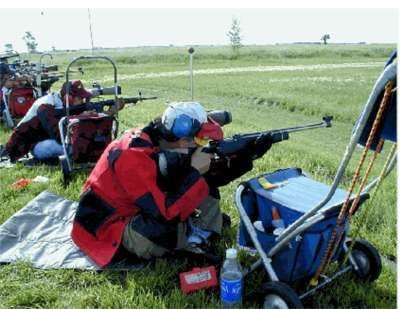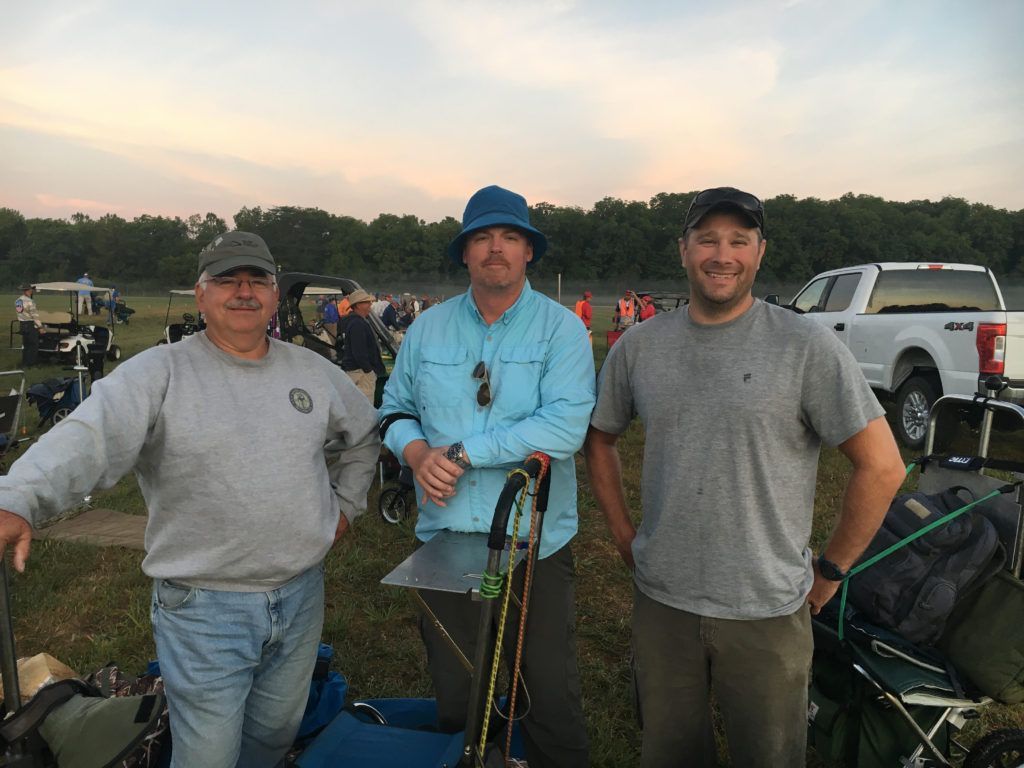High Power
Discipline Description
High Power Rifle shooting was originally based on courses of fire for military instruction. Today’s courses still include both slow and rapid fire stages. They involve shooting from various positions at fixed targets of standard dimensions at several standard known distances. The shooter who has mastered the High Power Rifle course of fire is not necessarily an accomplished field shot, but he has acquired the basic skills to develop into a first rate shot in the hunting field or on the field of combat.
COURSE OF FIRE
There are four strings of fire which are the basic building blocks of any NRA High Power Rifle course of fire or tournament. They are:
Slow fire, standing – 10 rounds at 200 yards in 10 minutes.
Rapid fire, sitting or kneeling – 10 rounds at 200 yards in 60 seconds.
Rapid fire, prone – 10 rounds at 300 yards in 70 seconds.
Slow fire, prone – 10 rounds at 500 or 600 yards in 10 minutes.
Every NRA High Power Rifle match for which classification records are kept is a multiple or combination of one or more of these strings. The popular National Match Course, for instance, consists of 10 rounds slow fire standing, 10 rounds rapid fire sitting or kneeling, 10 rounds rapid fire prone, and 20 rounds slow fire prone. Matches fired all at one distance and in one position are known as “single-stage” matches and are usually 20-shot matches (two times one of the basic strings).
“Slow fire” does not require much explanation. The shooter takes his position on the firing line, assumes the prescribed firing position and is allowed one minute per shot to fire his string. “Rapid fire,” on the other hand, is more elaborately choreographed.
In rapid fire, sitting or kneeling, the shooter uses a preparation period to establish his sitting or kneeling position. He then comes to a standing position and, on command, loads either two or five rounds (depending upon the firearm) into his rifle. When the targets appear, or the command to commence fire is given, the shooter gets into his firing position, fires the rounds in the rifle, reloads with eight or five more for a total of ten rounds, and finishes his string. The procedure for rapid fire prone differs only in the firing position and the time limit.

EQUIPMENT
RIFLE – Rifles to be used in High Power Rifle competition must be equipped with metallic sights, should be capable of holding at least five rounds of ammunition, and should be adapted to rapid reloading. Tournament programs often group competitors into two divisions: Service Rifle and Match Rifle. The rifles currently defined as “Service Rifles”: the M1, M14, M16, and their commercial equivalents meet these requirements. Winchester and Remington have made their Model 70 and Model 40x rifles in “match” versions and custom gunsmiths have made up match rifles on a number of different military and commercial actions. 1903 and 1903-A3 Springfield, 1917 Enfields, and pre-war Winchester Model 70 sporters in .30-06 are all equipped with clip slots for rapid reloading. The most suitable rear sights are aperture or “peep” with reliable, repeatable minute (or finer) adjustments. The front sight should be either of the post or aperture type.
SLING – The shooting sling is helpful in steadying the positions and controlling recoil. The sling may be used in any position except standing.
AMMUNITION – Most competitors eventually turn to handloading. Careful handloading will provide the shooter with ammunition less expensive and more accurate than he can procure otherwise. Both tracer and incendiary ammunition are prohibited by NRA Rules and armor-piercing ammunition may be prohibited by local range regulations.
SPOTTING SCOPE, SHOOTING COAT, SHOOTING GLOVE, EYE AND EAR PROTECTION, SIGHT BLACK and SCOREBOOK are also other useful items that you will need for successful rifle competition.
NRA CLASSIFICATION SYSTEM
NRA Rules describe a classification system which is designed to let shooters compete against others at a similar skill level. Each shooter, depending on his average competition score, is placed in a class designated High Master, Master, Expert, Sharpshooter, or Marksman. Tournament sponsors generally give awards in each class. Temporary classification is established after the first tournament and is maintained by the shooter himself. When 120 shots fired in NRA sanctioned competitions have been reported to the NRA Headquarters, the shooter will be sent his classification card and will no longer maintain a temporary classification.
LONG RANGE COMPETITION
NRA Rules provide for slow fire prone competition at ranges beyond 600 yards. Some of these matches permit the use of telescopic sights. Shots fired in Long Range competition are not reported for classification.
REDUCED-DISTANCE
High Power Rifle shooting at the full regulation distances requires a range with firing lines at 200, 300, and 600 (or 500) yards.
Every official NRA stage or course of fire normally conducted at 200, 300, or 600 yards can be run at 100 yards on NRA official reduced targets. The SR-1 target simulates the 200-yard target, the SR-21 is the 100-yard target equivalent of the 300-yard target, and the MR-31 gives the same appearance at 100 yards as the normal 600-yard target does at the full distance.
Because of their smaller size, the reduced targets are well adapted to being hung on stationary frames. Due to the short distances involved, it is practicable to walk down to the targets after each string and remove them for scoring elsewhere or to score them on the frames. The use of stationary target frames avoids the complications that sometimes arise when the number of shooters on the line isn’t equal to the number of target operators in the pits.
Reduced 300- and 600-yard targets are also available for firing at 200 yards. The NRA can provide a list of target sources, including reduced targets.
HIGH POWER SPORTING RIFLE
The High Power Sporting Rifle Rules were introduced in 1985. This variation is fired with hunting-type rifles which may be equipped with telescopic sights. The course is fired at a single distance – either 100 or 200 yards – and rapid fire strings are only four shots to accommodate the typical hunting rifle.
BMRPA HIGH POWER AND LONG RANGE CLINIC
The BMRPA presents a two-hour clinic on shooting High Power and Long Range matches each spring. Please check our calendar or contact us for the exact date and location. This clinic will go into detail on the concepts covered briefly in this article.
BMRPA members Tom Thompson, Morgen Dietrich and Tom Headrick attended the NRA National High Power Rifle Championships held at Camp Atterbury, Indiana. This National Championship event has been held since 1907. The matches were moved from Camp Perry, Ohio in 2016 to Camp Atterbury.




